The Environment and Resources Authority public hearing regarding the Integrated Pollution Prevention Control (IPPC) permit for the Electrogas plant has come to an end, with the board voting in favour of the IPPC permit being granted for the new gas-fired powerstation at Delimara for a four year period.
Eight board members voted in favour, and one against.
Today's hearing saw the crowd become quite restless during the 7.5 hours of debate.
During the question and answer phase, what was originally a near-empty hall has now become quite filled, however some members of the crowd began interrupting the PN representatives and making fun of them. Ann Fenech took around 45 minutes for her speech, posing many questions, and some other PN representatives offered to give up their time for her to keep addressing the technical issues. This, however, seems to have agitated the crowd who would speak up every now and again interrupting her.
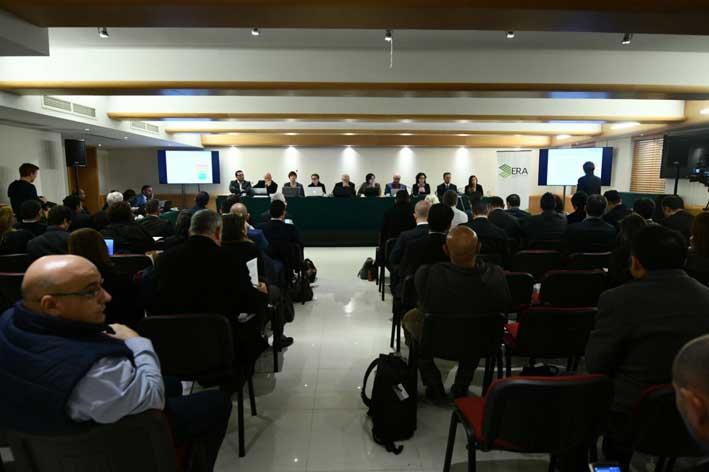
The PN were not the only ones who were interrupted by the crowd, with Din L-Art Helwa representative Joanna Spiteri Staines also made fun of. She began to complain about the lack of time given to review the answers sent to those who posed questions by the ERA (four days), however a large number of people in the room began yelling, and statements like “you follow Ann Fenech” and "you've been talking for 25 years" could be heard. In addition, some made flatulence noises. Since DLH did not have time to consult their experts on the responses they had received, they did not speak further.
The ERA chairperson threatened to remove people from the room should they do something similair again, after PN MP Ryan Callus said that certain individuals from the crowd made disparaging remarks.
Professor Viktor Axiak, Chairman of the ERA Board has removed himself from today’s ERA Board meeting that will see a final decision regarding the Integrated Pollution Prevention Control (IPPC) permit for the Electrogas plant, declaring a conflict of interest.
In his stead, Ms Carmen Buttigieg was chairing the meeting. She read out a short statement by Prof Axiak at the beginning of the meeting, explaining that he served as an independent consultant on the Environment Impact Assessment for the project.
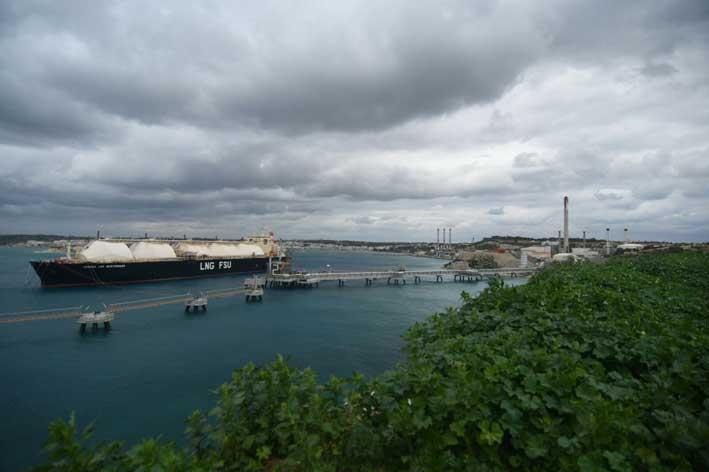
At the start, a Transport Malta representative said that the authority received certification from the international certification authority Bureau Veritas regarding the storm moorings, the Floating Storage Unit (FSU) and the jetty at the Electrogas plant, confirming that they comply with applicable standards.
He was addressing the Environment and resources Authority (ERA) Board public hearing regarding the Integrated Pollution Prevention Control (IPPC) for the Electrogas plant.
He said that a wave height limit of 2.5m was identified when the FSU is moored, and 2m during ship-to-ship transfers. All navigation maneuvres will also have four tugboats assisting, he said.
"During refuelling and storm-mooring, the exclusion zone around the FSU will be wider, however a fairway will be maintained," he explained.
The IPPC application also covers the terminal and floating storage facility, and the conversion of the BWSC plant to gas.
The controversial Electrogas facility has seen many arguments raised over the Summer during the public consultation period, with the Opposition raising a number of issues on the matter. Reports have read that the station could be up and running by mid-February if the permit goes through.
A CPD representative said that they chose the four largest scenarios when designing the emergency plan, stating what they would require in such situations. The worst possible event considered by the CPD and their consultants Falck is a premeditated deliberate event. Such an event would require two fire-fighting tugs, and industrial firefighting appliances which have been ordered and will be in place this coming year. Temporary measures have been put in place until then.
He mentioned that there is a temporary fire station in the area as well, which is not specifically for this plant, but also handles other industry in the area. He also said that a gas cloud, if there were to be an incident, would not reach Marsaxlokk.
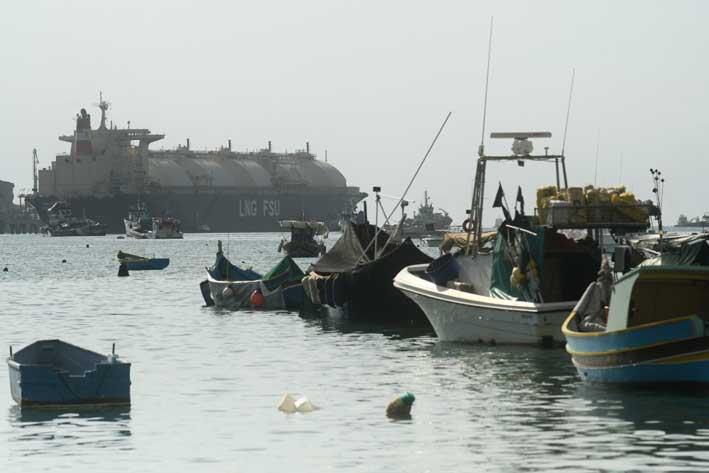
Turning to Public consultation feedback received, an ERA representative delivered a short presentation and said, with regards to fireworks and if they can be fired from the areas where they launch from today, that there shouldn’t be a problems “It would be up to the police to grant permissions, however, and the OHSA said it is willing to pass on information to the police when they are issuing such permissions should they wish".
“Noise will need to be monitored as a result of the IPPC permit if granted”. She said that Electrogas is in discussions with the Planning Authority regarding a lighting plan.
As for complaints regarding the visual impact, she said this was discussed during the design stage.
She also said that there will be regular monitoring of the treated waste water.
Turning to low-flying aircraft, she said that Delimara, as a critical infrastructure installation, will become a low-fly zone.
The geology of the area was also studied, and turning to the small rockslide earlier this year, it was far from the jetty she said. Studies whether such things could affect the FSU found that there would be no impact, she explained.
The value of property in the area is not reducing and there has not been a negative impact on tourism there, she explained.
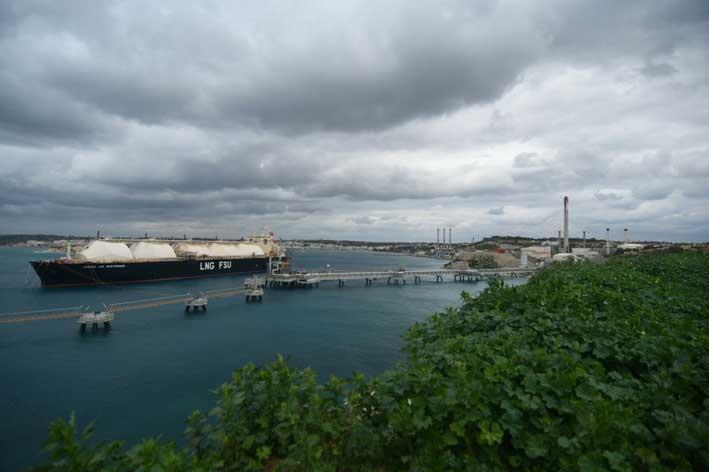
Representing Enemalta, Peter Paul Zammit said that in the future, once the Delimara 4 is commissioned, Delimara 1 will be shut down. Enemalta will hold Delimara 2a and B on standby.
Enemalta will hold the rights of dispatch on all plants on the site as well as on the interconnector, he said.
Turning to safety studies, Enemalta had to create a safety management system and an internal emergency plan looking at what Enemalta would have to do in case of an emergency. He said that studies were made, and feedback was received from consultants etc.
Enemalta also conducted coordinated safety studies and a coordinated response plan was made.
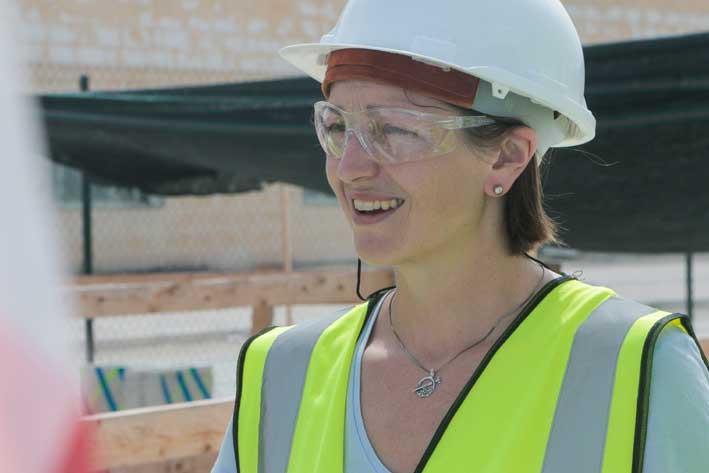
Electrogas representative Catherine Halpin said that the project has three main aspects; a CCGT plant, a jetty and regasification plant, and a floating storage unit. “There will be an environment management system,” she said
The gas will transfer from the tanker to the on-shore facilities. She explained that there will be boil off gas, “which is natural with LNG, however we will bring it back and pressurise it on shore for use in the turbine”.
The Jetty and mooring systems are specially designed for the Floating Storage Unit, she said. “The FSU has five tanks, made of aluminium to maintain insulation. The ship also has a manifold to transfer the LNG and boil-off gass to shore. The spread mooring system has eight individual legs, each with an anchor restored under tension. There is a ground chain tied to a triple chain for weight”.
She explained that there will be a multi-levelsafety and mitigation system, and said that safety studies were conducted.
On Marine discharge, there would be an 11% reduction in water-flow discharge as a result of the plant. There is also a cesspit. The FSU has a treatment plant and any oily waste will go through oil separators. The regasification plant area will have emergency spill kits etc, and also has an LNG collection trench. All hazardous waste will be held on site.
All waste will be collected by licensed collectors.
Electrogas has completed a comprehensive safety report on the installation as well as other reports, she explained.
Ruth Debrincat gave a presentation on the BWSC plant. Delimara area is now a multi-operator site, she said. There will be a total of eight engines, she said, some utilising gas, some, and four with duel-fuel engines, where if there is a shortage of natural gas can turn to diesel use. The gas supply will come from Electrogas.
Oily water will pass through oily water interceptors, and a drain plan is also in place to ensure there would not be any discharge into the marine environment.
A Control of Major Accident Hazards (Comah) representative said that the levels of risk are within the tolerable and acceptable limits.
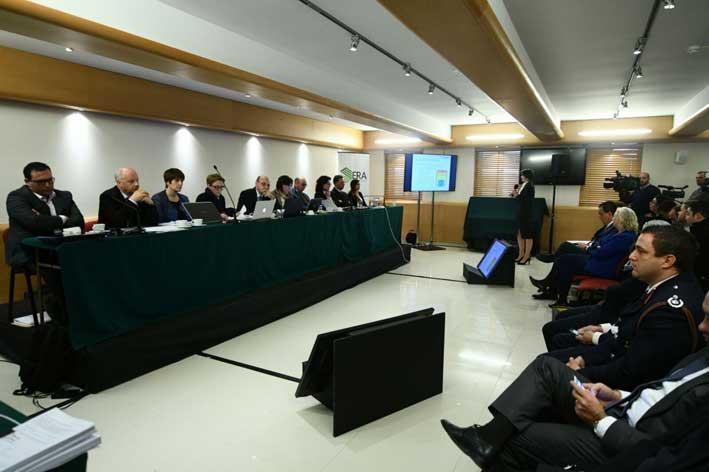
Questions and answers
Taking questions from the public, the board heard Engineer Arthur Ciantar, a resident of the area around the plant. He read from the quantitive risk assessment, which states that regarding the society risk in the unlikely risk of an accident the number of fatalities is acceptable if compared with the acceptance criteria in other EU countries with a quantative risk assessment. He asked why Malta is being compared with other countries. Where are Malta’s national risk criteria? He said he was referred to Serveso 2, however he argued that the Serveso 3 directive (which deals with the control of major accident hazards involving dangerous substances) came into force on 1 June 2015. “With its introduction, Serveso 2 became defunct”.
He referred to the Comah representative’s statement. “We are saying the number of possible fatalities are acceptable. In Maltese jurisdiction where can we justify that the number of fatalities is acceptable. How could you justify the death of those people in Maltese law. There is no provision that states that the number of deaths is acceptable or tolerable in Maltese law. Is the risk matrix shown by the Comah representative approved by Parliament? What is the number of deaths that would be acceptable?”
Turning to the external emergency plan, he questioned the public consultation on this as is needed in Serveso 3. “Do you call two meetings as an effective consultation? There hasn’t been effective public participation, and there is no information as to how people will be warned, there were no testing procedures in this regard and we do not know what the warning alarm even sounds like”.
The resident said that you cannot start the operation procedures without testing the emergency procedures. He also said that no evacuation exercise was conducted. The resident asked what insurance Electrogas is offering to the Marsaxlokk and Birzebbugia residents, and fishermen who use the bay.

There is nothing in Maltese law that can justify any loss of life, and this is the cardinal point of your decision today. The ERA is there to look at the interests of the Maltese citizens.
The Comah representative responded to his queries, and regarding the societal risk in Maltese law. There are very few countries with a law for societal risk, there are practices, he said. He also said that the risk matrix does not refer to number of fatalities, but to the risk.
He said the only difference between Serveso 2 and 3 is the Classification levelling and packaging system, yet all the risk, including risk assessments etc are the same, and the change has nothing to do with safety issues.
In an emergency, he said people should go inside, and listen to the news.
He stressed that the emergency plan is dynamic, and if for example, Electrogas improve their security systems, then the plan would need to change.
Catherine Halpin from Electrogas said one must remember Electrogas has conducted a safety study.
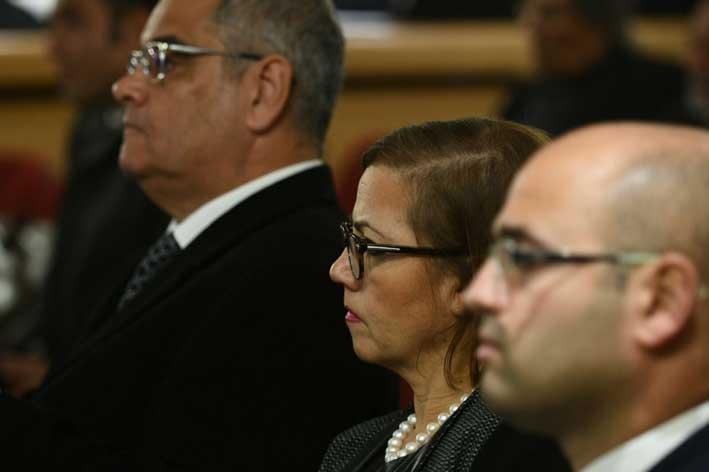
PN President Ann Fenech said she had asked three weeks ago for a meeting with the ERA so as not to take time from this meeting, however she was told to wait.
She expressed her disappointment at the fact that they had been asking for answers to their questions for months. Dr Fenech said that the Quantative Risk Assessment stated: “Regarding a societal risk, in the unlikely event of an accident, the number of fatalities is acceptable”. She again reiterated the resident’s question “how many fatalities is considered acceptable?”
“In what country has such an assessment been made with regard to a floating storage unit? There is no response in your replies,” she said.
She also argued that when the permit for the plant was given, it was on condition that the risk assessment be done. As such, she said, “it is not true that you cannot do anything about moving the tanker further away from the bay.”
She also said it is misleading to compare the situation in Malta to that in Lithuania,
Regarding the Serveso breaches, she said that Serveso was breached repeatedy, as there are a number of articles not honoured. She added that what residents are meant to do in a case of an emergency has been kept hidden due to national security. She said people should know what to do if there is an incident.
She spoke about wave heights, and the tanker issue. “If the waves are too rough and the tugs can’t pull the LNG tanker out, what will happen?” She asked, adding that this question was not answered. She also asked that without quick release hooks, without an engine, with a wave-height higher than 2m, how can this ship leave the area? “What is the procedure?”
She also spoke about the jetty. Is this jetty certified? By this we do not mean in terms of its design, or certified as a structure. We want to know the significant maximum wave-height that this jetty can take with a ship alongside. Reports showed the significant wave-height was 2.5m Then where is this certificate? She asked. She argued that the design certificate was provided and that this was given.
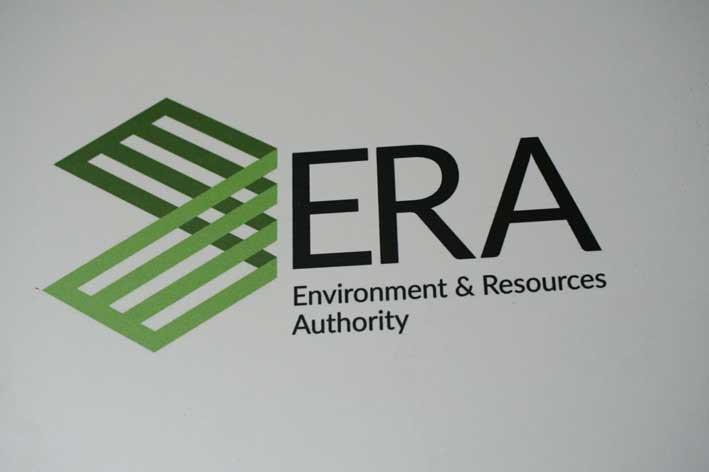
“Certain tests need to be provided during the commissions test, requesting the operator for full certification. This means Bureau Veritas has not supplied the certificate for what the significant wave-height is,” she argued.
She said that geological testing was not conducted on the area behind the jetty, adding that last year there was a rock fall there where people hurt. She said that in response to this question posed, she was told there was no rock-fall, however produced an image taken from last year, saying that it showed a rock-fall.
In response to the array of questions fired by the PN party President, the Comah representative said that the CPD has two years to modify any training plans, make any drills etc.
Another Electrogas representative spoke about the storm mooring system is not a simple problem but it doesn’t mean it can’t be solved. He said that piles were not used due to the inconvenience it could cause the persons in the area, and so an anchor system was chosen. There were no problems with regards to this system being used and it was less intrusive to the population.
Turning to situations where the wave-height would exceed the operational limits of the FSU, a representative said that if there is a wave forecast which exceeds what the jetty etc. can take, five days prior plans will be made to ensure the availability of the tug boats. “We monitor the weather daily, and should the forecasts still show that it will be above the operating limits, we will make a decision to leave the jetty 24 hours before”. Caroline Halpin also said that if the harbourmaster requires the ship to be taken out for safety reasons, this will also be done.
Transport Malta also said that if there is extraordinary weather they can activate the procedure themselves.
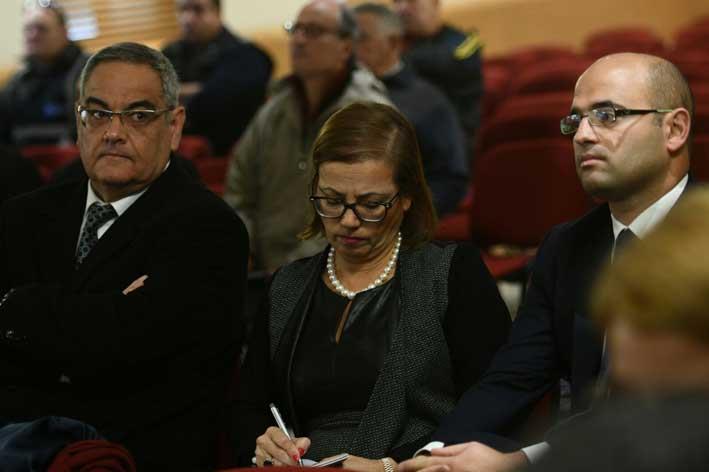 Crowd shouts partisan statements against Ann Fenech, DLH
Crowd shouts partisan statements against Ann Fenech, DLH
PN MP Ryan Callus said that “ERA’s responsibility is to analyse the comments made by the applicant and not give us their responses without checking. The Directorate failed to scrutinise. It is an insult for the operator to tell ERA that there are quick-release hooks when this is not the case, and you give us their replies”.
It is disparaging to give us four day’s notice regarding the date of this meeting and this is not how an independent authority should work, he said.
“I don’t understand how the tanker engines will be removed, but tell me, what is the quickest way for a tanker to leave a port during a storm, when it is self-propelled or through the help of tug boats. I think that the operator chose the easiest way to avoid engine repair costs”.
He questioned why the external evacuation plan was not tested, asking whether this was because people would realise the danger of the project.
Birzebbugia Mayor Joe Cutajar said that the council sent a leaflet to the residents regarding information. “More than 90% of residents say that the chimney is not acceptable”. Is it acceptable when 15% died from cancer within 2 months?
“The Delimara power station is a cancer factory. Give the residents clean air. The residents of that region want a station run on gas”.
With the debate winding down, the board members began to ask questions of their own, and Electrogas representatives said that wave models are based on statistical models going back 30 years, as well as seabed data. Real data on waves in the harbour however was not taken.The models are based on statistical models going back 30 years and mathematical models based on seabed data.